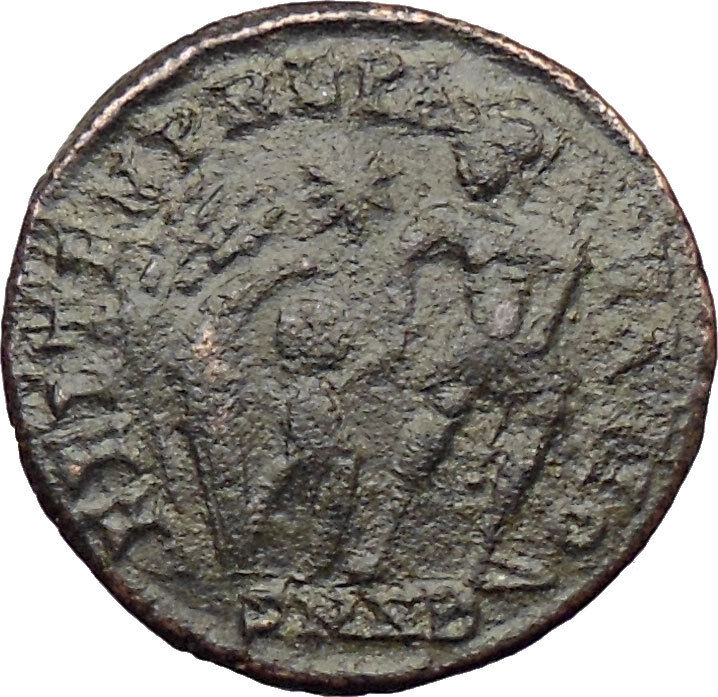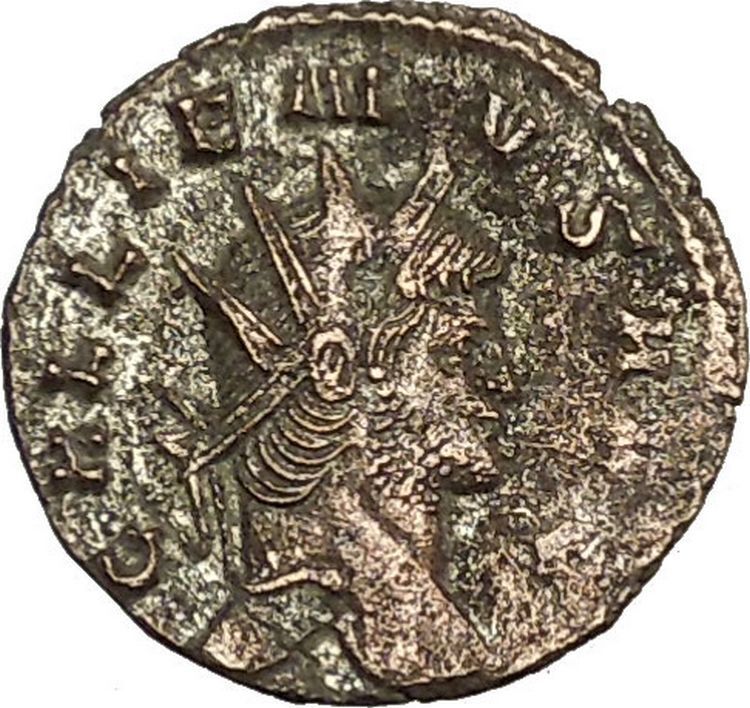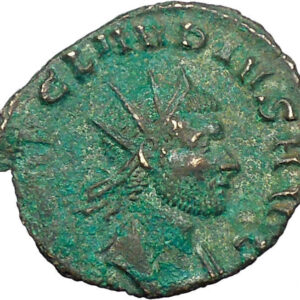|
Philip II – Roman Caesar: 244-249 A.D. –
Silver Antoninianus 24mm (2.96 grams) Rome mint: 245 A.D.
Reference: RIC 216c (Philip I), C 54
MIVLPHILIPPVSCAES – Radiate, draped and cuirassed bust right.
PRINCIPIIVVENT – Philip II standing right, holding spear and globe.
*Numismatic Note: “Damnatio tupe”
Ruling dynasties often exploit pomp and ceremony with the use
of regalia
:
crowns
,
robes,
orb and sceptres
,
You are bidding on the exact item pictured,
provided with a Certificate of Authenticity and Lifetime Guarantee of
Authenticity.

Marcus
Julius Philippus Severus, also known as Philippus II, Philip II
and Philip the Younger (238 – 249) was the son and heir of the
Roman
Emperor
Philip the Arab
by his wife Roman Empress
Marcia Otacilia Severa
. According to numismatic evidence, he had a sister
called Julia Severa or Severina, whom the ancient Roman sources do not mention.
When his father became emperor in 244 he was appointed
Caesar
. Philippus was
consul
in 247
and 248. His father was killed in battle by his successor
Decius
in 249.
When news of this death reached Rome, he was murdered by the
Praetorian Guard
. He died in his mother’s arms. When he died, he was eleven
years old.
Leadership
cadres use
symbols
to reinforce their
position power
and provide a level of
differentiation.
Clothing
frequently articulates rank or
privilege, but accessories and external entities of varying functionality may
also serve to mark out leaders – from
finger rings
to personal aircraft.
Presidential symbols
Presidential symbols include many various insignia or other devices to denote
a president’s position. Some symbols follow accepted constitutional or
diplomatic
standards:
flags, sashes
, entrance Marches or a
medallion
or
necklace
. The use of the symbols mostly occurs
for domestic purposes.
Examples of such symbols include the
American
presidential march “Hail
to the Chief“, and the
presidential sashes
worn by the presidents of
Latin America
nations. More practical,
semi-symbolic features also abound: bodyguards may lurk semi-overtly; a head of
state may use a special aircraft (see for example
Air Force One
).
European presidents sometimes dress archaically for formal occasions. Such
special clothing sets them apart – and may well militate against women aspiring
to such high office when tradition expects them to wear (say)
knee-breeches
[citation
needed].
Royal/Imperial
symbols
Ruling dynasties often exploit pomp and ceremony with the use of
regalia
:
crowns
,
robes,
orb and sceptres
, some of which are reflections
of formerly practical objects. The use of language mechanisms also support this
differentiation with subjects talking of “the crown” and/or of “the
throne
” rather than referring directly to
personal names and items.
Monarchies
provide the most explicit
demonstration of tools to strengthen the elevation of leaders. Thrones sit high
on daises
leading to subjects lifting their gaze
(if they have permission) to contemplate the ruler. Architecture in general can
set leaders apart: note the symbolism inherent in the very name of the Chinese
imperial
Forbidden City
.
The culture and legends around the ruling family may build on myths of
divine-right
and describe the ruler or the
Son of Heaven
[citation
needed].
Court
ceremonial highlights symbolic distance
between a royal/imperial leader and follower, in a hierarchical system which
cultivates a social system and power network around the monarch.
Bowing
and
curtseying
remain as examples of the
self-abasement of
hand-sucking
, bowing and scraping,
prostration
,
kowtowing
and
proskynesis
formerly demanded.
Sometimes
colour
plays a special role in advertising
monarchical status: thus the once very rare pink/maroon dye color became a
symbol reserved for imperial clothing – see
purple
.
Archaic touches often symbolically recall a glorious historical past: thus
horse-drawn carriages
replace everyday motor-vehicles for
royal state occasions, and
courtiers
and flunkeys in elaborate
dress
grant a sense of ancient distance. And
monarchs emphasize the remaining traces of their
divine right
to rule when undergoing anointing
at the hands of the Church during coronation ceremonies.
Socio-political leadership symbols
Overlapping with and/or emulating royalty, a
ruling class
or an
aristocracy
can devote much of its energy into
“keeping up appearances” and emphasizing the purity of noble blood by apartness.
Symbolism can aid this process cheaply. A
coat-of-arms
(perhaps in the form of a banner
or on note-paper) or the wearing of a
sword
can incur less expense than maintaining a
stately home
. The visible presence of
servants
or
slaves
reminds underlings of
social distance
.
Patronage
, especially of
fashion
, provides one of the most symbolic
attributes of social leaders or would-be leaders. Compare
conspicuous consumption
.
Military
leadership symbols
Apart from more elaborate
uniform
and their distinguishing marks (epaulettes,
caps, medals
), senior military officers may
traditionally carry a
baton
or affect a similar substitute (such as a
swagger stick
or
cane
). Compare
staff of office
.
Banners
,
pennants
and
guidons
serve (or served in the past) to
identify leaders as rallying-points or field command-posts. Traces of these
continue on staff cars
or on naval ships, for example: see
broad pennant
and compare the concept and
origin of a flagship
.
Ecclesiastical leadership symbols
Religious dignitaries often use
vestments
to emphasize the overall sacred
nature of their organization. But some touches identify leaders and make them
more imposing: a bishop’s
mitre
, for example, a cardinal’s
red hat
, a papal
tiara
or a
papal ring
. Less flamboyant faiths may use
subtler symbolism to set religious leadership, holiness or saintliness apart:
the understated dark vestments of the Protestant clergyman, the relatively
unobtrusive
clerical collar
, or even the nakedness of a
stereotypical Hindu
ascetic
fakir
.
Gender-related leadership symbols
Ownership of a harem
has both practical and symbolic uses for
leaders in traditional polygamous societies: harems spread genes and
symbolically demonstrate wealth and status. Within such harems whole systems of
symbolism may develop: the use of exclusive and inaccessible apartness,
veiling, and the employment of
eunuchs
. Cultures which practise
serial monogamy
feature harem-analogous
symbolism in the flaunting of
trophy wives
.
Items such as
codpieces
may suggest the assumed superiority
of one gender-role
over another: or symbolic
leadership (implied by implied potency) within
patriarchal
structures. A slightly less extreme
example, but one more common in modern times, expresses
power
relationships (and thus leadership
symbolism) through the use of the phrase “wearing the
trousers
“.
Ancient Egyptian
pharaohs
used a stylised artificial
labdanum
-soaked goats-hair
beard
as one of the regalia of rulership: a
clear case of associating a male attribute with leadership.
|









